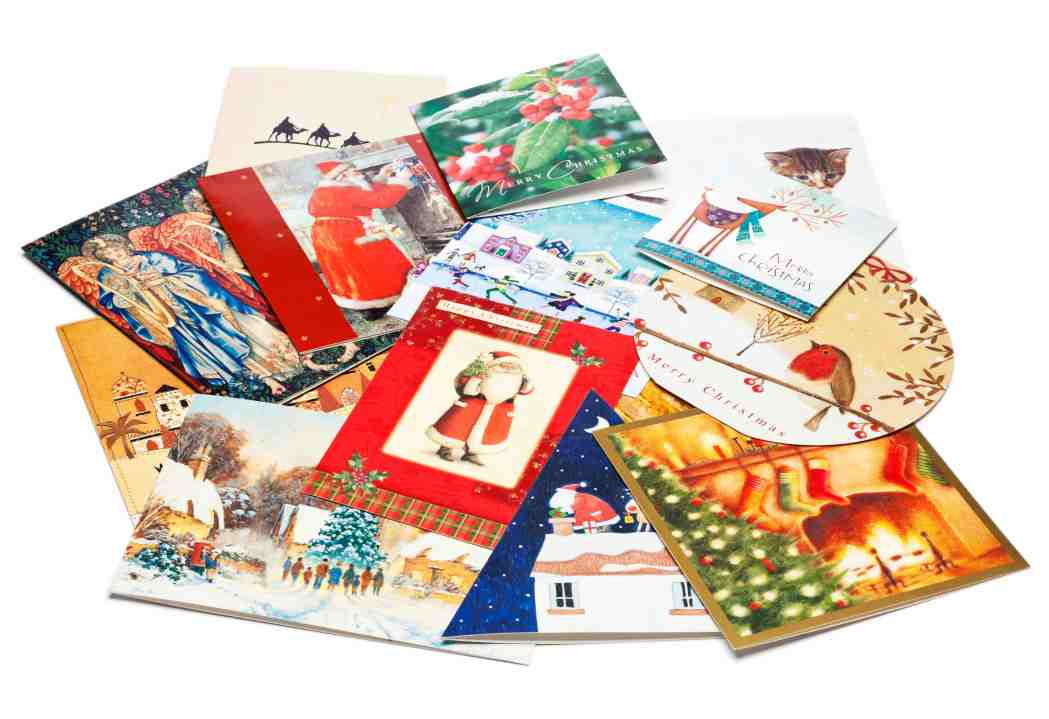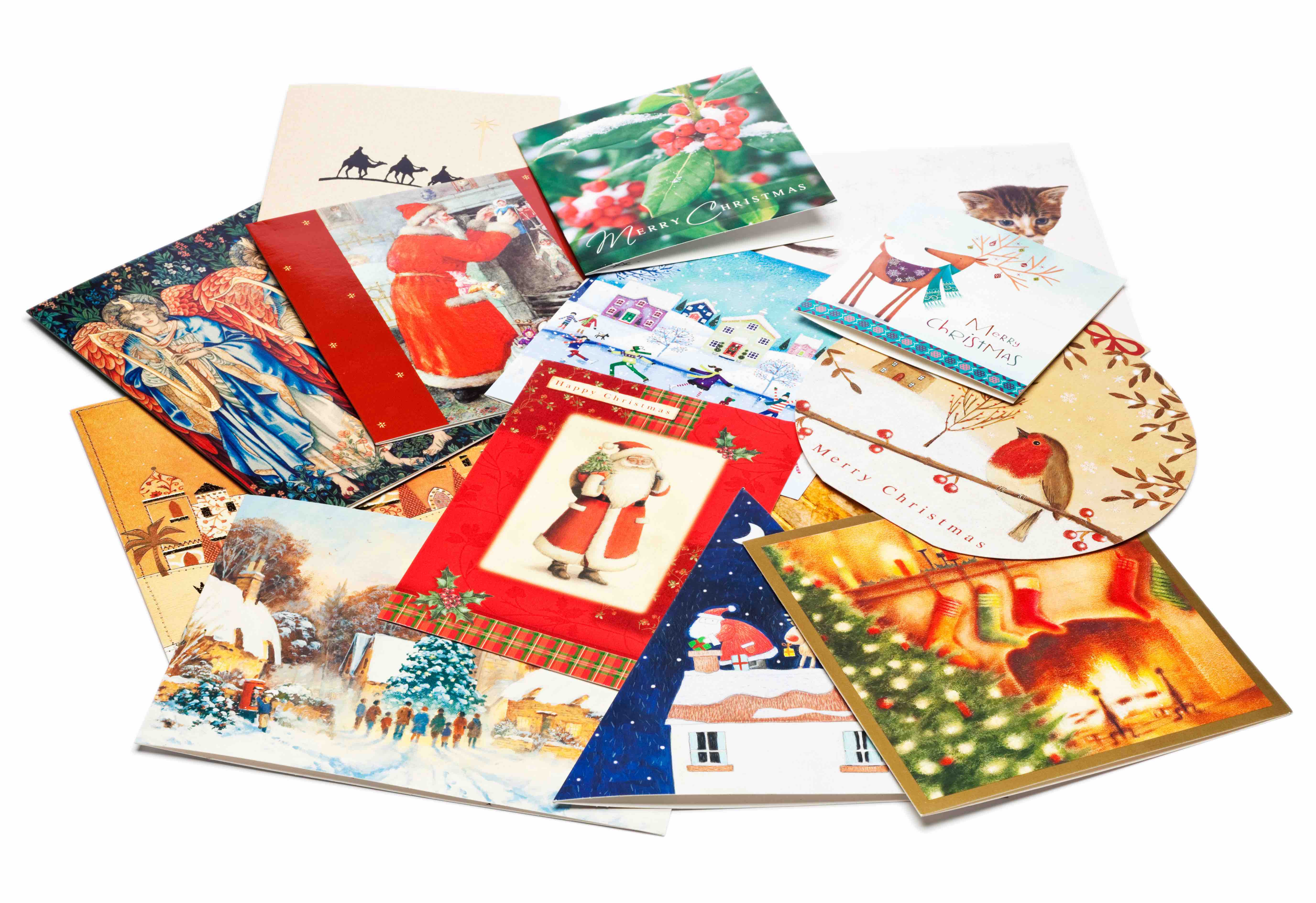The festive season brings with it many enjoyably trivial decisions to fret over. Sprouts with or without chestnuts and bacon? To tastefully colour-scheme the Christmas tree or throw every garish bauble at it? Presents before or after lunch?
This year, however, I have another decision to make and it’s one that I’m finding surprisingly tough: to write Christmas cards or just let that tradition… go?
Usually by this point in December I’m scribbling away, determined to get my 70-odd cards written and sent while they can still reach their destinations with a second-class stamp. (Let’s not mention the foreign cards; they always arrive late.) While it does sometimes feel like a chore, I try to make it fun by pouring a glass of port or putting on a Christmassy film. And it could be worse – shadow chancellor Rachel Reeves recently revealed she sends 3,200 and has to start writing them in the summer.
Over the years I’ve developed a system. I’ve got a list permanently saved in my email drafts and once the card and envelope have been written (I still rely on a Filofax for addresses) I’ll add the current year next to the name as a way of ticking them off. It’s then very satisfying listening to the thud as a stack of cards hit the bottom of the post box.
In the past I’ve always dismissed predictions of the demise of the Christmas card. However, this year the cons really are starting to outweigh the pros. Have I posted my last?
Growing up, I remember all the cards hanging from little pegs on red strings and dashing around on Christmas Eve delivering them to neighbours for Mum
Let’s consider the cons. First, there’s the expense. The cost of stamps has been rising steadily and with a second-class stamp now 68p that’s a minimum of £47.60 to send my cards. It becomes even pricier if any have to go first-class – an eye-watering 95p per stamp – or abroad, a minimum of £1.85. When there are so many more fundamental costs to consider at the moment, shelling out for cards really does feel like a luxury.
The cards themselves obviously cost money too, though I resent that less as there are often three-for-two deals to be done, and you can give a little support to a charity by buying their boxes. Primary schools also benefit from cards sold to parents with designs lovingly (and often hilariously) created by their little ones. (Now both mine are at secondary school I do miss the dive-bombing robins and drunken snowmen.)
Second – and what has really stopped me in my tracks this year – is the repeated postal strikes. According to Royal Mail I’ve already missed the deadline for second-class post, which was 12 December. Even cards sent first-class must be posted by 16 December for Christmas delivery, they say. (The foreign cards are definitely doomed now.) Deliveries to my letterbox already feel sporadic, so is there any point if my cards don’t have a hope of reaching their destinations in time?
Third, this a tradition I maintain on my own. My husband writes about three cards and isn’t bothered if they’re in an envelope or virtual. He feels card-writing is a rod I’ve made for my own back at a time of year when I already complain I’m overwhelmed. There’s also the argument against Christmas cards on environmental grounds. Rationally, they don’t make sense – but so much about this time of year isn’t rational, and the emotional pull of Christmas cards just won’t go away.
So here are the pros. They’re infused with nostalgia. Growing up, I remember all the cards hanging from little pegs on red strings and dashing around on Christmas Eve delivering cards to neighbours for Mum. (Who was no doubt also overwhelmed at this time of year.)
I enjoy looking at the colourful rows of cards on the bookshelves in our living room. With the prospect of not getting any (Christmas cards are transactional, you tend to send them to those who send them to you) I have realised how much they’re an integral part of our decorations, the backdrop to everything else. Having them there also reminds me I have quite a lot of friends: essentially, they make me feel popular.
Many believe that Christmas cards are a superficial way to stay in touch, especially if like me you keep it to the minimum – the recipients’ names, festive greeting, our names plus kisses. While I love reading others’ news, I’ve never got the time to put together a round-robin letter, let alone write something personal in each one.
Still, I’d argue that even a basic Christmas card is a catalyst for deeper interaction. Writing them reminds me of people I’ve perhaps not seen for a while and how much I like them. It spurs me into making plans to catch up in person.
Just checking someone’s address is still current can lead to picking up a friendship that’s gone a bit dormant. A couple of years ago I had a wonderful chat on the phone for about an hour with an old friend I’d not seen for ages after he rang to check we were still in the same place. If Christmas is partly about the importance of social connections, what better and more visible way of letting people know that you are thinking about them than sending a card?
So, while the hassle and cost of sending Christmas cards are no longer trivial, it’s clear it’s a tradition I’m not ready to let go of just yet. Time to get writing, then. I may still risk the second-class post, so apologies in advance if your card turns up rather late.
But as I struggle to imagine my teenage children’s generation sending Christmas cards, let’s just be thankful we still get any at all.







Comments